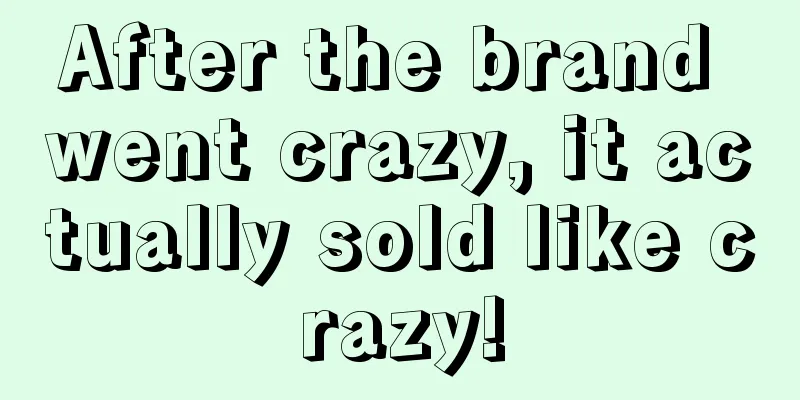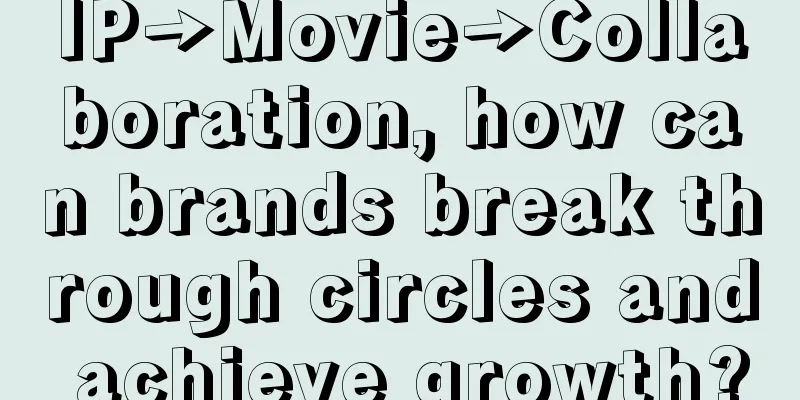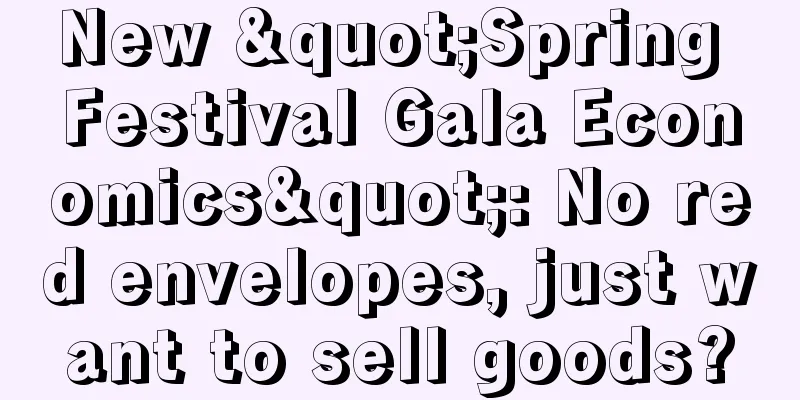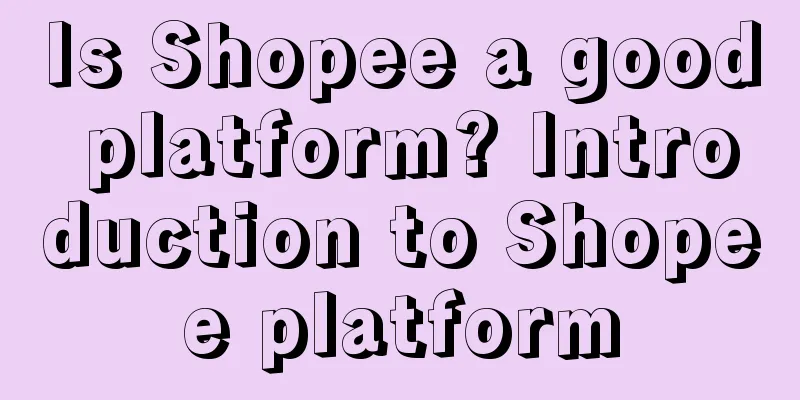Brand Setting | Brand creation starts with setting
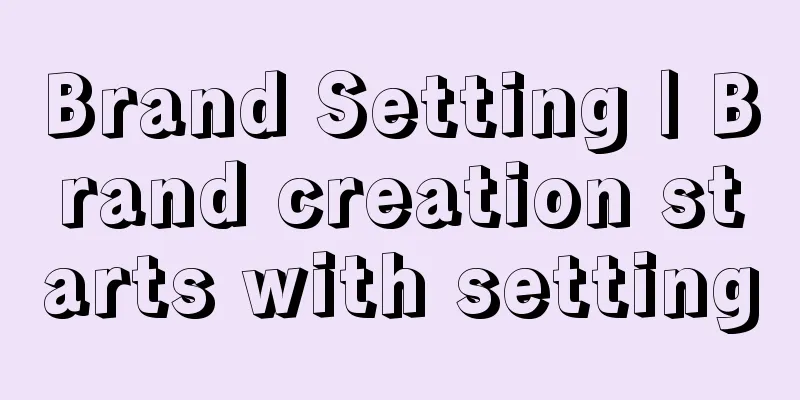
Hello, I am Shaokang, and I am a brand creator like you. Today we start the first lecture on brand setting - brand creation starts with setting. I think you must be wondering, how come there is a new concept and a new term called "brand setting"? Is it different from the commonly said "brand personality setting"? I'll post the answer first. Brand setting is not just about personality setting, it is aimed at user experience, that is, what kind of feeling the brand wants users to have when they see and experience the brand and products, and therefore what needs to be done to achieve the specific plan of the goal. It is like setting a person's code of conduct and determining the arrangement of different sections within the team. To put it bluntly, after the brand positioning, concept and story are clear, we have to think clearly in advance about how to understand and use them and maintain brand consistency. And before we actually create the brand identity system, content and products, how can we magnify our own advantages and allocate the resources in the team based on a unified goal. When doing brand creation, we need to start with setting. So, why do we need to do brand setting? What is the core meaning of brand setting? What are the specific contents of brand setting? ? In this regard, this article introduces and analyzes from three aspects, and recommends friends who are interested in brands to read. Let me give you a few examples that happen frequently, and you may have a better understanding of what brand settings are used for. 1. Many brands don’t know how to express themselvesA low-alcohol fruit wine brand wanted to convey the female drinking culture, but neither the internal team nor the users had a clear understanding of how to define and express this culture, which led to confusion in brand tone and visuals. Sometimes it goes for the Chinese style and invites Chinese style spokespersons, and sometimes it goes for the simple and petty bourgeoisie style. The brand assets have been in a state of chaos for a long time and have not been accumulated. It is also difficult for partners to make decisions on some specific issues. We have many emerging brands that are good at setting strategies and differentiation. However, no matter how precise the concept is, if it cannot be communicated and expressed to users in a creative and unified way, it will only remain in the company's high-level meetings. This problem is also often encountered by some teams that outsource part of their brand positioning and creation work. The consulting or design company provides the brand with a set of solutions, which includes strategies, concepts, visuals, etc., which are quite distinctive and complete. However, when the brand uses it itself, it may just repeat the visuals on the detail page or packaging. However, in terms of products, content, experience and other dimensions, they will not be used, updated or continued. I don’t know how to apply these things to different media for expression. I haven’t promoted the brand and communicated with users in a comprehensive manner. 2. Know what to express, but the expression is inconsistent and inconsistent, and users cannot feel itA skin care brand with excellent market performance came to communicate with us. They feel that their brand system is not unified, the spokespersons they hired do not seem to be the right fit, and do not suit the core demographic. At that time, I asked them, what does the brand want to convey? His answer was happiness. The concept is obviously fine, but the problem is that there is no definition of "happiness" and content creation and expression are carried out directly, which can easily go astray. How is your happiness different from the happiness of McDonald's and Coca-Cola? What kind of happiness is it in what kind of situation? Is it the happiness of a sincere and reserved smile, or the more refreshing laughter with sports and sunshine? The more concepts require interpretation, the clearer the settings are. Otherwise, the team will not understand them, and the output results will be biased when performing various types of work. Even if the founder and brand director manage them, it will be difficult to maintain consistency, and users will naturally feel that it is not so clear. Many brands always feel that users cannot feel the information, ideas, and values they want to convey, and the problem often arises in the settings. If the external expression is to be clear, it must first be highly unified internally. 3. The goals and positions of different departments within the team are different, and they are always fighting with each other.This problem often occurs when it is difficult to reach a consensus among product, brand, and sales parties. Everyone has their own positions and ideas. Today he wants to make this product, and tomorrow she feels that she must develop that, making it difficult to coordinate internal resources. A home cleaning brand, the partners in charge of operations hope that the product department will continue to launch new products to stimulate the needs of different users and scenarios. Their basis is data and market demand. How to balance from the perspective of the overall brand is a problem that founders often struggle with.
Everyone may be right, but they just haven't worked together to set up the various brand sections. In fact, brand setting is like on-the-job training, with some rules and restrictions to let everyone know that the various sections of our brand should be coordinated in this way. Only when the internal understanding is clear can a synergy be formed, and finally the user experience and feelings will be good. The three frequently encountered problems mentioned above actually illustrate the core significance of brand setting. The first thing that brand setting does is to define the way the brand is expressed. Then, after figuring out how to express it consistently, coordinate based on existing resources and brand resources under different stage goals. In fact, when we build a brand, it is like making a long-term movie for users. The product is the actor, and the founder is the director and screenwriter of this brand movie. Before every movie officially starts shooting, the director and founder first have an idea and a theme they want to express, and then the screenwriter uses this to create the script. This is exactly the same as the creation of a new brand. Before we formally start creating language, visuals, packaging, and content, we should also write a script for the brand first. What is our brand telling and doing? As the actor in the film, how should the product perform? How can we make the users, the audience, understand this play? The script of a brand has the same elements as a movie script: time, place, characters, scenes, prescribed situations, and dramatic conflicts. In fact, brand setting is setting the script. How wonderful the script is depends on the screenwriter and director’s understanding, insight and experience of life, users and society. When a director is directing a play, his most important job is to make everyone in the team understand as much as possible what he wants to express and what kind of pictures are appropriate. This is then used to coordinate various types of work and resources on site, including but not limited to: costumes, props, makeup, actors, sets, photography, action direction, dubbing, etc. Let these different sections work together to create good pictures and clearly and accurately express the story and theme of the film, this will be a good show. The same goes for brand setting. You need to coordinate the resources of various departments like a director, so that the entire team understands what the brand wants to express and how various departments should cooperate in order to make the brand operate reasonably. So from this perspective, a brand is actually a long-term creation for users. So brand setting means thinking about the creation requirements and goals of all sections before officially starting the creation. It is a creation execution setting that starts from the end. It is based on strategy and positioning, and tells partners in the group what attitude and route our brand should take to reach its destination. It is an important reference for brand actions and decisions. Next, let’s talk about what brand settings are about. Brand settings usually include the following 8 aspects: Let’s take Sandunban as an example to see how these sections holistically express the values and ideas they want to convey. You should be very familiar with Santonban. It is not a very deliberate brand, and its content is mainly soft, slowly soaking into your feelings. 1. Santonban’s brand settingConcept story: Explore the flavor of the planet, natural environmental protection, and lifestyle related to specialty coffee. It is worth mentioning the phrase "explore the flavor of the planet". Exploration, in addition to going to many places to search, also means pioneering and forerunner. Planetary flavors are not necessarily limited to coffee. Coffee is the starting point, but related to it, all flavors worth exploring on this planet can be tried. Another meaning of this sentence is the founder's love for Star Wars, and the "planet concept" comes from this. Now that we understand the concept and story, let’s take a look at how Sandunban operates in various dimensions. 2. Santonban’s product settingsIts product line structure is relatively complete. I will take its product line structure during Double Eleven as an example. The concept that Sandunban wants to express is "exploring flavors from around the world". If it is just this sentence, it is actually difficult for users to perceive it. But it is actually achieved by: cooperating with pioneers or independent baristas and coffee shops in different regions to develop products, including Yunnan, Japan, Quanzhou and other places. It not only expresses the brand's real "exploration of flavors", but also gives the impression of a professional pursuit of coffee quality. When I received the Sandunban Double Eleven gift box in 2020, what impressed me most was the Planet's Breathing Fragrance Card. The natural scent of a coffee bean producing area somewhere abroad was reproduced on the card, giving me the feeling of "exploring flavors". 3. Language settings for SandunbanIts overall language is natural, confident, petty-bourgeois, and very restrained. I heard that up to now, the official account of Sandunban is still written by the founder himself in order to maintain a unified tone. When I first experienced it, I found it hard to imagine that as a local brand, there was no Chinese word on the main picture of the packaging. What impressed me most was the sentence "MAY THE FORCE BE WITH YOU" on the packaging box, which is a classic line in Star Wars. It may understand coffee as your daily supply of the Force. 4. Santonban visual settingThe visual is supported by just the right sense of design and has a lot of white space. The overall visual planet is the theme element, and the small jar is the core symbol. The anthropomorphic IP of the small jar is constantly shaped to continuously communicate with users. Like language, the visual aspect does not deliberately pursue "effect" or "impact". 5. Three and a half space settingsSan Dun Ban’s offline experience store in Shanghai does not look like a traditional coffee shop just from its name: “INTO THE FORCE”. Its setting is to let you experience the world it builds and its design concept. It especially "steps back" the entire store at the entrance, in order to integrate the location of the entrance and the Anfu Road neighborhood, hoping to make users want to come in naturally. This shop doesn't just exist for coffee. It collaborates with artists to hold exhibitions, organizes return plans, and may occasionally host a live house, all of which reflect the "sense of life", "sense of locality", and "lifestyle related to boutique coffee" that it has always wanted to emphasize. I was most impressed by Sandunban’s concern for design and its different understanding of certain scenarios at an international food and beverage exhibition. At that time, almost all brands and supply chains were preparing their booths with a B-end mindset: traditional booths, product brochures, investment promotion staff, etc. But Sandunban is not like that. It thinks this place can also build its world. It set up the booth as a "flying radio station" with camping as the theme concept. It set up a tent on site and actually borrowed a van to record the radio station in the van. When these are presented in front of you, you will have an illusion that I am not visiting an industry exhibition, but coming here to check in. In terms of content and activity settings, Sandunban is also using the Return Plan to continuously strengthen its concepts of "exploring the planet" and "environmental protection". It is a waste to throw away the coffee can after use. When the user signs up for the return flight plan, she has already recognized the brand's concept and established a connection with the brand during the event. Most of the physical stores that Santonban has chosen for the return plan are in line with the brand tone and have relatively overlapping user profiles. Therefore, this activity allows users to "explore" those wonderful stores selected by Santonban, reducing the travel costs of recycling. The more jars she has, the richer the peripherals she can redeem. And Santonban does not really treat its peripherals as advertisements. These peripherals are quite interesting and attractive in themselves, instead of the conventional practice of sticking a logo on a thermos. Santonban is a role model for many new consumer brands and is often used as an example by us. Its tonality, unity, restraint and experience have set a good example for this generation of brand people. But you have to know that any brand building that seems to make many people comfortable has taken a lot of time and the results must be carefully controlled. The meaning of brand setting is how to better control the brand and achieve what we want. Brand setting is a kind of structured thinking, which means that you need to first find the points in your framework system, rather than a single-point thinking. For example, if you only consider one product and design unilaterally, it will affect the overall expression of the concept. Well, that’s almost all for our first lecture. I hope you can understand today’s explanation:
In the next lecture, we will explain in detail the specific content of brand personality setting. Author: Shaokang loves brain burning Source: Shaokang Blake (ID: shaokang92) |
<<: Seven things marketers can learn from "The Rush"
>>: Douyin Supermarket is launched, will it “disrupt” local life?
Recommend
They’re all marketing, so why do expensive ice creams have different fates?
There are only a few expensive ice cream brands, b...
What is eBay's current official logistics? What are the methods?
As a cross-border e-commerce platform, the develop...
With over 36 million members and an IPO on the horizon, how does Gu Ming, a brand with tens of thousands of stores, operate its private domain?
The continued growth of Gu Ming's performance ...
Why is the official account designed in this unique way?
In an era where content is king, all major content...
With 100 million units sold in 3 years, Bear Electric Appliances has become the top small household appliance brand. How does it plan its private domain operations?
In recent years, more and more people have paid at...
Are Amazon Outlets promotions effective? How do they work?
Merchants who run stores on Amazon often use outle...
Content e-commerce, a panacea for TVB to realize monetization?
Last September, Taobao Live began to enter the &qu...
MINISO has become the ideal type of top IP
The author of this article analyzes MINISO's o...
Is it better to use RMB or USD on Shopee? What are the fees?
Friends who do cross-border e-commerce should all ...
What are the operating procedures of Alibaba International Station? How to operate?
Everyone has heard of Alibaba International Statio...
“Arguing” with celebrities and complaining about UP hosts becomes a “high-risk” job?
This article deeply analyzes the conflict between ...
Is it easy to be a freight forwarder on Shopee? What are the requirements to be a freight forwarder?
Speaking of Shopee freight forwarder, in fact, man...
Brand No. 1: How to use verbs to call to action
This article shares five key points that need to b...
The number of views increased by 42 times, and "MBTI" became popular on Xiaohongshu
MBTI quickly became popular on the Internet and ev...
From the 500 accounts with the fastest increase in followers, we can see the secret code for Xiaohongshu's "takeoff" in 2025
In the vast content ecosystem of Xiaohongshu, whic...




